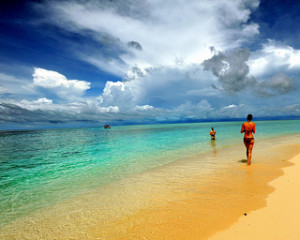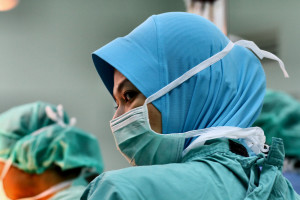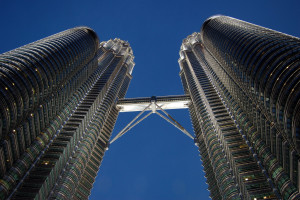OK, so you need a hip replacement — lots of baby boomers do. Or you need a coronary artery bypass graft (CABG), another increasingly common surgery for the baby boom generation.
If you’re an American, you could get them done in the U.S. and run up bills upwards of $80,000 for the bypass procedure or $30,000 for the hip replacement, and hope your insurance or Medicare foots the bulk of it (if you have insurance or Medicare).
Or you could travel abroad and get the same medical treatments for a fraction of the price — and maybe even have a vacation to boot.
According to the book Patients Without Borders — Everybody’s Guide to Affordable, World-Class Healthcare, a CABG will cost you about $20,000 in Malaysia, while a hip replacement will run about $12,500.
Meanwhile, a valve replacement in Malaysia will set you back $18,500, compared to $85,000 in the U.S., while a facelift (not covered by Medicare) is $4,900 in Malaysia compared to $14,500 in the U.S.
The exact figures may vary, of course, but the cost savings should be substantial in any event.
A few caveats: Medicare rarely covers any medical procedures done abroad, and, of course, check any private insurance you may have for coverage. You’ll also need to figure in travel expenses and the potential wear and tear of air travel.
Why Malaysia?
The Malaysian government is making a huge push for “medical tourism,” as it’s called, and the country was recently named Medical Travel “Destination of the Year 2015” by the U.K.’s International Medical Travel Journal (IMTJ), the world’s leading journal for the medical travel industry.
Malaysia won the award based on all-round excellence in promoting inbound medical tourism, yearly growth in medical tourists served, evidence of high levels of patient satisfaction and coordinated activities that delivered an increase in medical tourism.
Malaysia attracted almost 800,000 medical tourists in 2014, and hopes to increase that by ten percent this year.
Patients Beyond Borders, an organization that provides consumer information about medical and health travel, described Malaysia as medical travel’s “best-kept secret, with fluent English spoken everywhere and cost savings comparable to India, in less culturally jarring settings.”
(India is another popular spot for medical tourism, as are Thailand, Taiwan, South Korea, and some non-Asian countries such as Brazil and Mexico.)
A Booming Business
Patients Beyond Borders estimates that medical tourism worldwide is a $55 billion per year industry, with 8 million traveling patients worldwide, including 1,200,000 Americans.
The top reason Americans travel to other countries for medical treatment, not surprisingly, is cost savings.
Depending upon the country and type of treatment, uninsured and under-insured patients, as well as those seeking elective care, can realize up to 15-85 percent savings over the cost of treatment in the U.S., according to Patients Beyond Borders.
In Malaysia, a favorable exchange rate, a lower cost of living, and single-tier pricing for locals and foreigners all help reduce costs. Caps imposed by the Malaysian Ministry of Health further reduce procedures and treatment fees. (Medical tourism is actively promoted by the Malaysian government, a big plus.)
Or, as one health traveler put it, “I took out my credit card instead of a second mortgage on my home.”
Quality Care
But what about the quality of care?
Malaysian medical specialists have been trained in complex procedures at some of the top medical institutions in the world, including those in Australia, the UK and the U.S. Medical treatments are carried out in state-of-the-art facilities that have been furnished to meet international standards.
For two years in a row, the Medical Travel Quality Alliance (MTQUA) named Malaysia’s Prince Court Medical Centre the “Top Hospital for Medical Tourists.” According to MTQUA, Prince Court “provides medical tourists with excellent care beyond standard protocols.”
Other top medical facilities include Kuala Lumpur’s Imperial Dental Specialist Centre and the Beverly Wilshire Medical Centre (yes, that’s its name), for cosmetic surgery.
Help Upon Arrival
The MHTC Concierge, run by the Malaysia Healthcare Travel Council, is a one-stop-center that provides medical travelers with easy access to all the information needed in order to have a comfortable and productive stay in Malaysia.
You’ll find the MHTC Concierge at the Kuala Lumpur International Airport Arrival Hall (Gate 5) and the Penang International Airport. They’ll answer medical inquiries, help you obtain healthcare services information, and provide information about transport, accommodation, and travel in Malaysia.
If you are able to travel in Malaysia before or after your medical procedure, it’s a real bonus.
Kuala Lumpur is a modern city featuring the Petronas Twin Towers and lots of amenities; Penang is an island noted for its food, and its main city, George Town, whose architectural and cultural heritage has earned it UNESCO World Heritage Site status; Malacca, another World Heritage Site, has Dutch canal scenes right out of a Vermeer painting; Malaysia is blessed with beautiful beaches, rainforests and highlands; and East Malaysia on the island of Borneo is exotic and a haven of traditional culture.
With the potential money you’ll save on surgeries, you could have a nice long recuperative vacation afterwards, and still have plenty of cash left over.
Readers: You can subscribe to my blog and get notification of every post by simply typing in your email address and clicking on the blue Subscribe button or downloading my free report, How to Ride the Coming Wave of Boomers. Thanks!















Leave a Reply